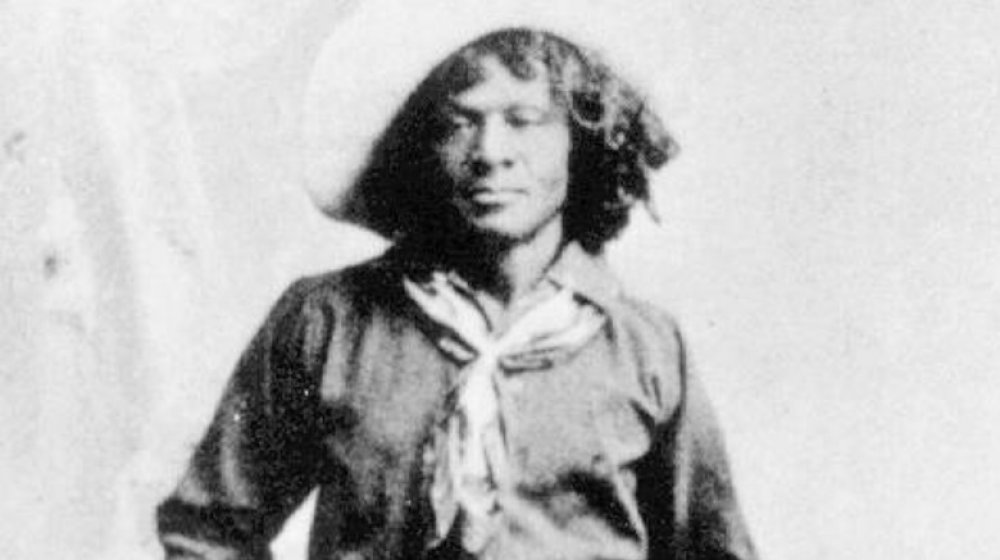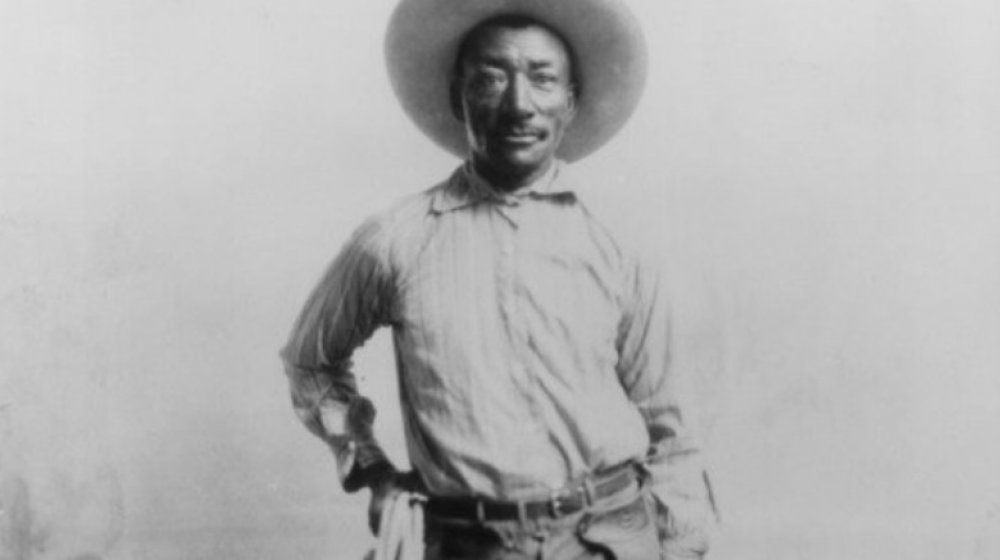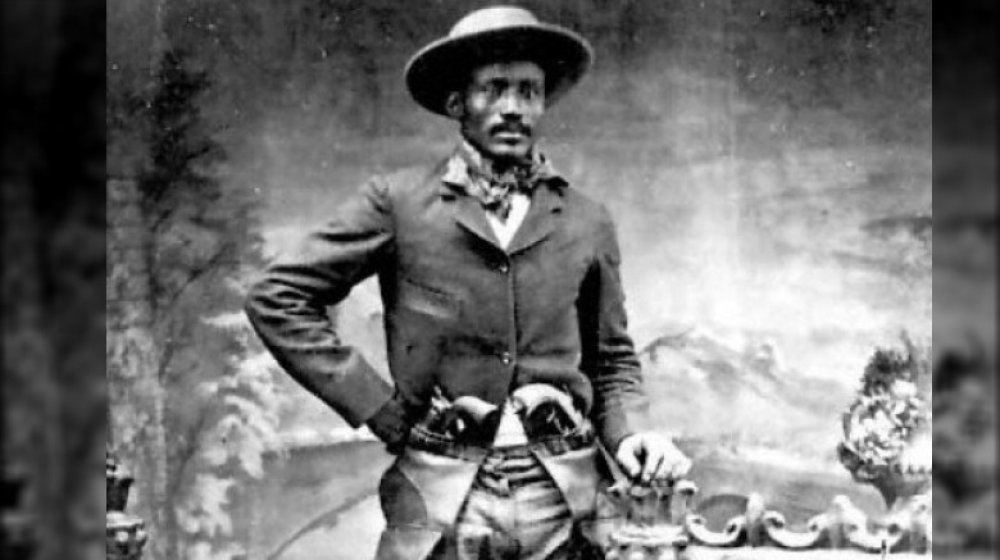The Untold Truth Of Black Cowboys
Maybe we can all agree that the movie theater isn't necessarily a great place to learn history. Oh, sure, there are exceptions here and there, but mostly? Bring some salt with you next time, and not just for the popcorn; you'll need to take a grain or two the next time you read the words "based on a true story."
For instance: Cowboys settled the west, especially cowboys who looked like Tom Mix, or Roy Rogers, or Gene Autry, or even Hopalong Cassidy. You know — male, and white. The Lone Ranger and Red Ryder might have had faithful Native American sidekicks, but that's about as far as it got. Overall, if anybody was galloping over the hill or into the sunset, odds are it was a white guy, probably wearing a white hat.
A cowboy was a herder — moving cattle from place to place, sometimes protecting them and gathering them on the ranch, driving them across long distances to a railhead to market. The burgeoning cattle industry in the West after the Civil War drew young men from the defeated Southern states — land was cheap and work was available. Moving right along with them were the newly-freed slaves.
Bill Pickett invented a rodeo event
Research shows that the population of cowboys in the Old West was at least 25 percent black, says Smithsonian. It makes perfect sense. Many slaves were already skilled in stock handling and other forms of manual labor required on ranches and trail drives. There was opportunity out West that was consistently denied them in Eastern states, both of the South and the North. Post-war economic devastation also limited possibilities.
What's extraordinary about the exodus is that once on the ranch and on the trail, black cowboys were treated as the equals of whites. They were paid the same, given the same working conditions and equipment, fed the same, sheltered the same. According to William Loren Katz, author of The Black West, "being a cowboy was one of the few jobs open to men of color who wanted to not serve as elevator operators or delivery boys or other similar occupations." Arizona Central says that it was not unusual for some Texas ranches to have all-black crews.
Once in town, it was a different story. Gambling halls were happy to take the money of black cowboys, but they would have to order and receive food out the back door of a cafe or restaurant. Fewer hotels would offer lodging to black cowboys.
Isom Dart's rustling past eventually caught up with him
But at work, it was different. Several black cowboys became justly famous for their skills. One of the few cowboy autobiographies was written by Nat Love, born a slave in 1854 in Tennessee, as WNET tells us. He cowboyed throughout the American West, and while his book might possibly contain some, shall we say, exaggeration, it still provides a detailed look at that life in those times.
Another black cowboy standout was Bill Pickett. He comes later in the story — he wasn't born until 1871, and missed the age of the great trail drives — but he still made a significant mark as a rodeo artist and performer in Wild West shows, according to True West. He's often credited with inventing the rodeo event known as "bulldogging" a steer, though as Pickett practiced it, it meant biting the lip of the steer and forcing it to the ground without using his hands. Yum.
Not all black cowboys rode the straight and narrow trail. Isom Dart was another ex-slave, but instead of herding cattle for hire, he rustled other people's stock. Eventually he tried to settle down on his own ranch, but his past caught up with him and he was shot — some would say murdered — by range detective Tom Horn, hired by some of the ranchers whose beef Dart had appropriated over the years.


